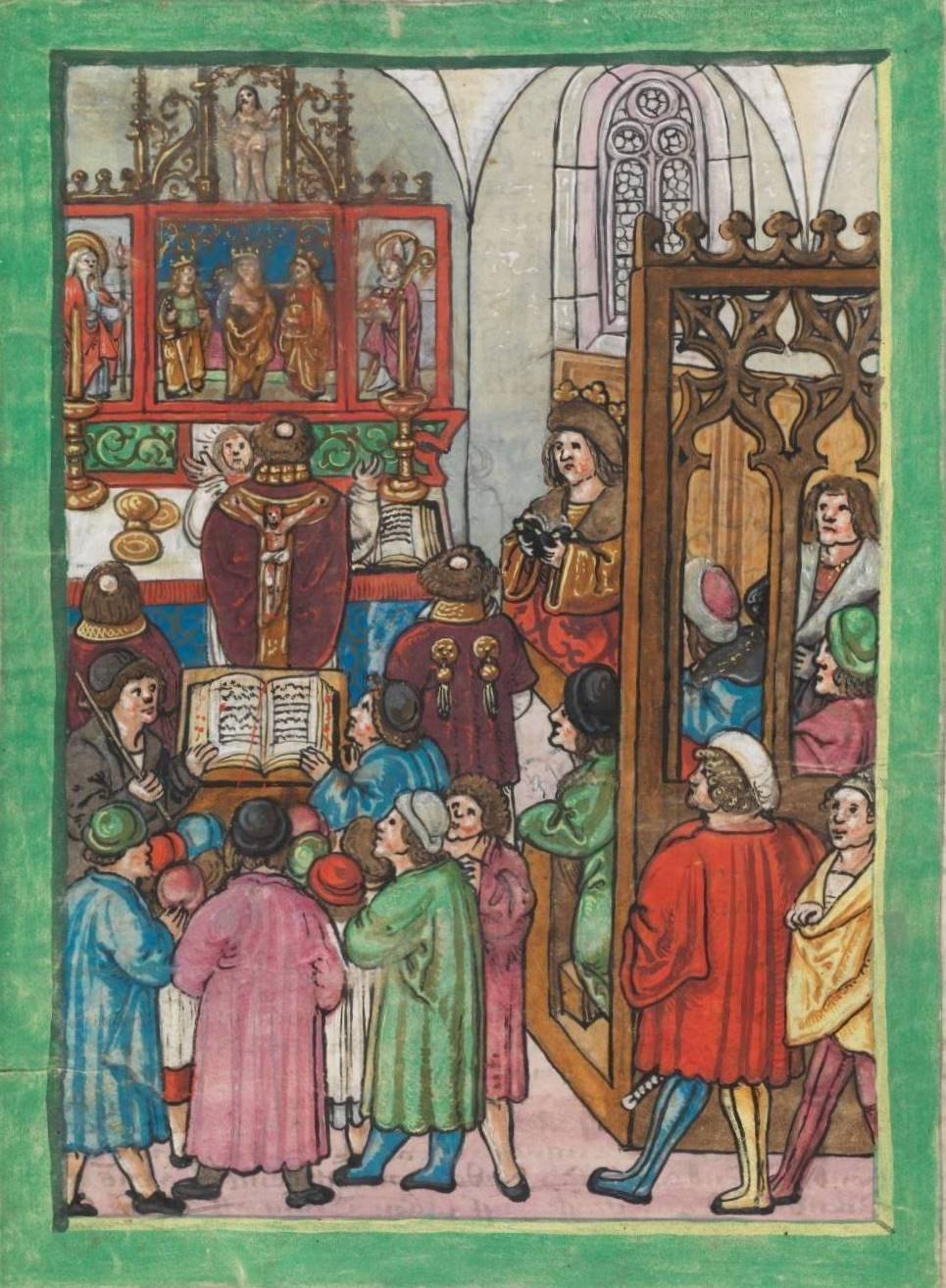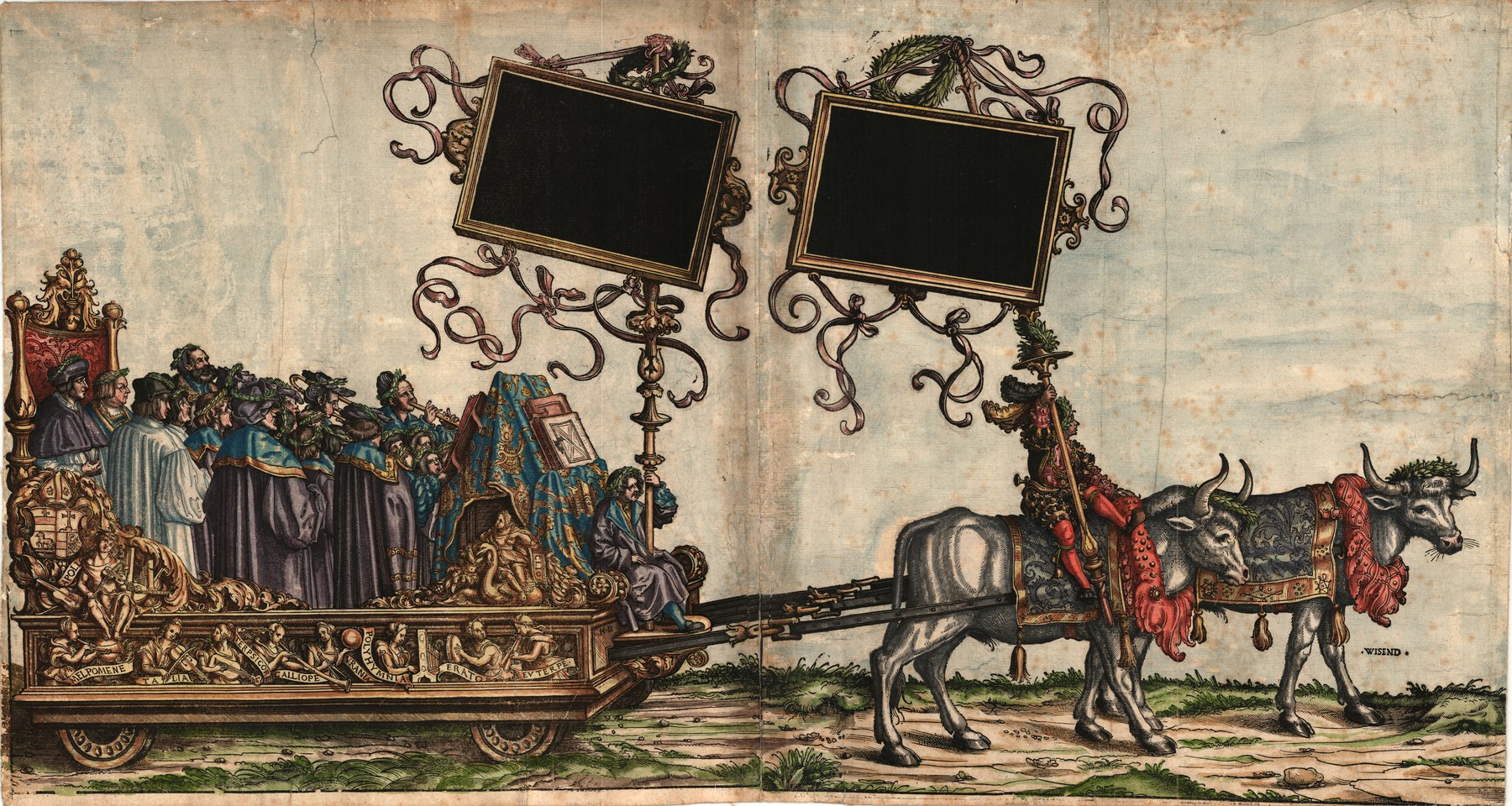Size and constitution of the chapel
While the Burgundian court kept daily records of the attendance of the members of the court as a basis for their payment, no such detailed lists have survived for Maximilian’s Austrian court. At best we have records of payment for individual occasions, or for longer stretches of activity, often quarterly payments. While the list of Maximilian’s court drawn up after his death includes nine chaplains, about twenty adult singers and as many boys, this evidently represents a pool of people who could be drawn upon for individual occasions:
Statt des Hoffgesindts/ so nach absterben der Khay: Matt: &c. Hochlöblicher gedachtnus zw Welß Im Monat Januarj des .1519. Jar gemacht worden ist/ Wie hernach volgt.
|
[… 4r]
[… 9v]
Bassisten
|
Altisten
Singer Knaben |
List of the members of Maximilian’s chapel, drawn up after his death in 1519. Vienna, HHStA, OMeA SR 181/3.[21]
Iconographical representations of Maximilian’s chapel suggest that performing ensembles consisted of five to eight men, and four to six boys: see » Abb. Maximilian I. im Dom zu Konstanz.
Such sizes suggest that the lower voice-parts were largely doubled, while the upper ones were sung by three or four boys apiece. Iconographical and other archival evidence suggests that some or all of the voices were sometimes doubled by trombones and cornetto: see » Abb. Triumphzug Kantorei.
The singers of the chapel are sometimes mentioned as performing with organ (» Instrumentenmuseum Orgel, Portativ]. The evidence suggests strongly that the organ was not used at this time to double the voices (colla parte), but played in alternation with the voices, improvising over a chant model. The organ could also be used to reinforce the cantus firmus in vocal polyphony, as can be deduced from A-Wn Cod. 5094.[22] Since written polyphony was performed from parts (either in separate books or in a choirbook), colla parte performance would require an organist either to memorise a piece of written polyphony, or to write it out in keyboard score; since no such keyboard scores have survived from this period, it is likely that organists did not routinely accompany colla parte except by reinforcing a cantus firmus, as mentioned above. The transcriptions of vocal originals in the surviving organ tabulatures from the early sixteenth century, such as those of Hans Buchner, Leonhard Kleber and Fridolin Sicher, were evidently intended as solo pieces rather than as accompaniments, since they include only extracts from larger works, depart in some details from the vocal originals, or include such a high degree of ornamentation as to render them unsuitable as accompaniment (see » C. Kap. Gebrauch und Missbrauch der Orgel).

